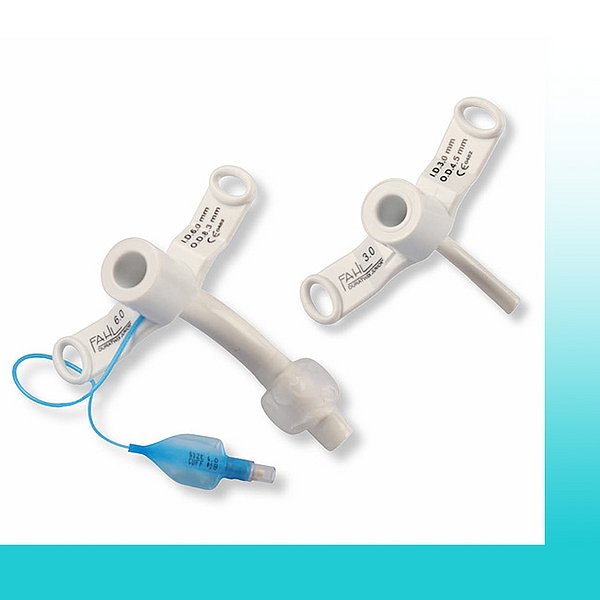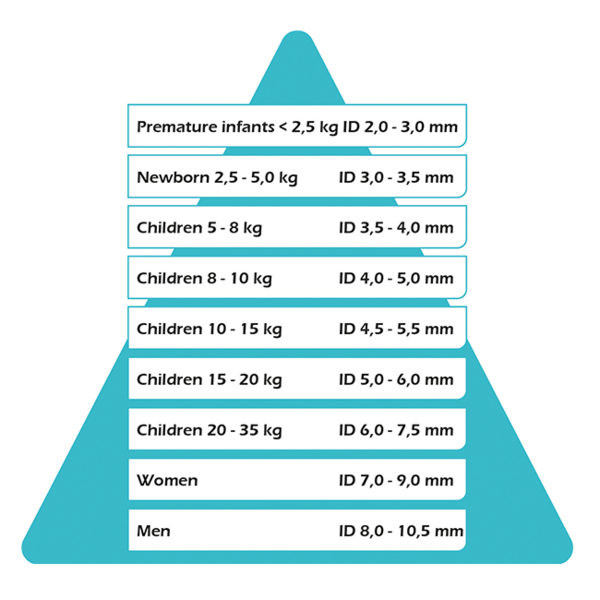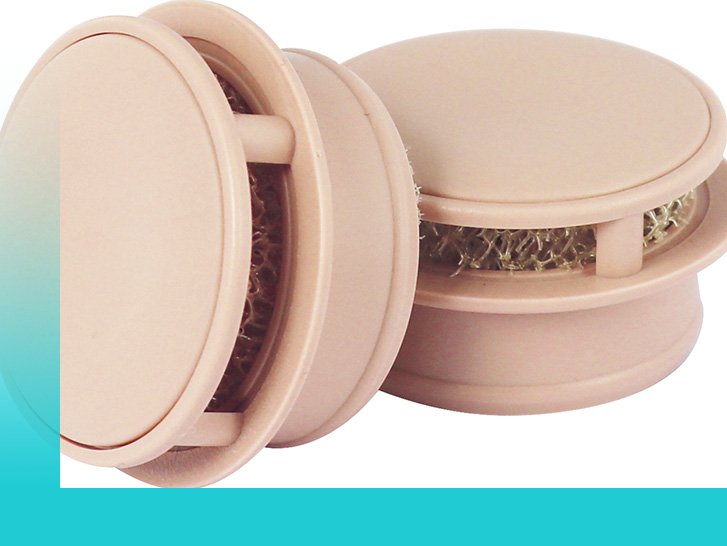Tracheostomy tubes for children
The product features must be right
"Children are not little adults!" - even if this sentence may seem a little trite to some, it remains true.
The anatomy of newborns and infants in particular differs significantly from that of adults. For example, the larynx (voice box) sits higher than in adults. The anatomical structures in children are highly sensitive and respond extremely sensitively to manipulation and compression. The paediatric trachea is slender and very soft.
Due to its dimensions, a tracheal cannula often completely occupies the paediatric trachea (windpipe) and leaves little space along the sides of the tracheostomy tube. This is why the tube may be in contact with the sensitive mucous membranes in the trachea. For this reason, it is especially important that the material of the tracheostomy tube be as soft and thermosensitive as possible.
Duratwix® Junior tracheostomy tubes have been specially developed for use in newborns, infants (NEO) and children (PED). Their thin-walled design ensures a large tidal volume and the thermosensitive plastic material of the tracheostomy tube provides anatomical contouring. The tube is free of DEHP and latex and allows radiographic visualisation to check tube position in the tracheostomy. The models without cuff can be used without any problems in MRI.
In addition, the atraumatic tube tip prevents irritation of the mucous membrane. A fixed 15 mm port allows the connection of various attachments such as heat & moisture exchangers (HMEs). The soft, anatomically shaped neck flange perfectly fits the neck and reduces unwanted pressure on the parastomal skin. All essential specifications are printed on the tracheostomy tube neck flange. Securing the tube with the ergonomically placed eyelets for the tube strap significantly reduces tracheostomal irritation.


To prevent ventilation leakage in case of possible ventilation, a tracheostomy tube with a cuff should be considered. The use of blockable tubes is particularly controversial in paediatric care. However, this use is still beneficial in certain situations, as long as attention is paid to the correct size and position of the tuber and its cuff pressure.
The Duratwix® Junior model comes in two versions (NEO and PED), each with and without a polyurethane cuff. The cuffed models are used to seal the tracheostomy tube against the tracheal wall to provide delayed aspiration protection and to allow constant pressure during mechanical ventilation.
Since small children inevitably grow up, it is also imperative to have the tracheostomy tube situation checked regularly by a doctor. On the one hand, the size, and on the other hand, the length of the tube should match the child's stage of growth and development.
Duratwix Junior tracheostomy tubes are available in half sizes from 2.5 to 6 and with a curved angle of 120 degrees, depending on the model.


